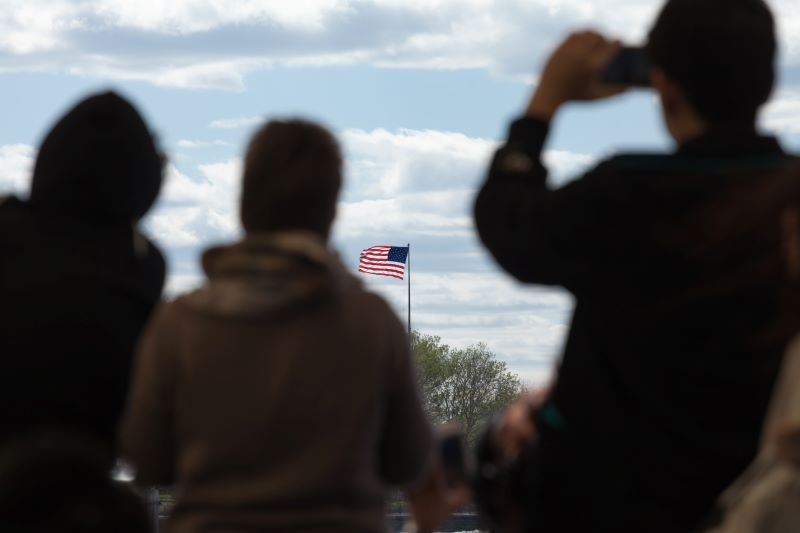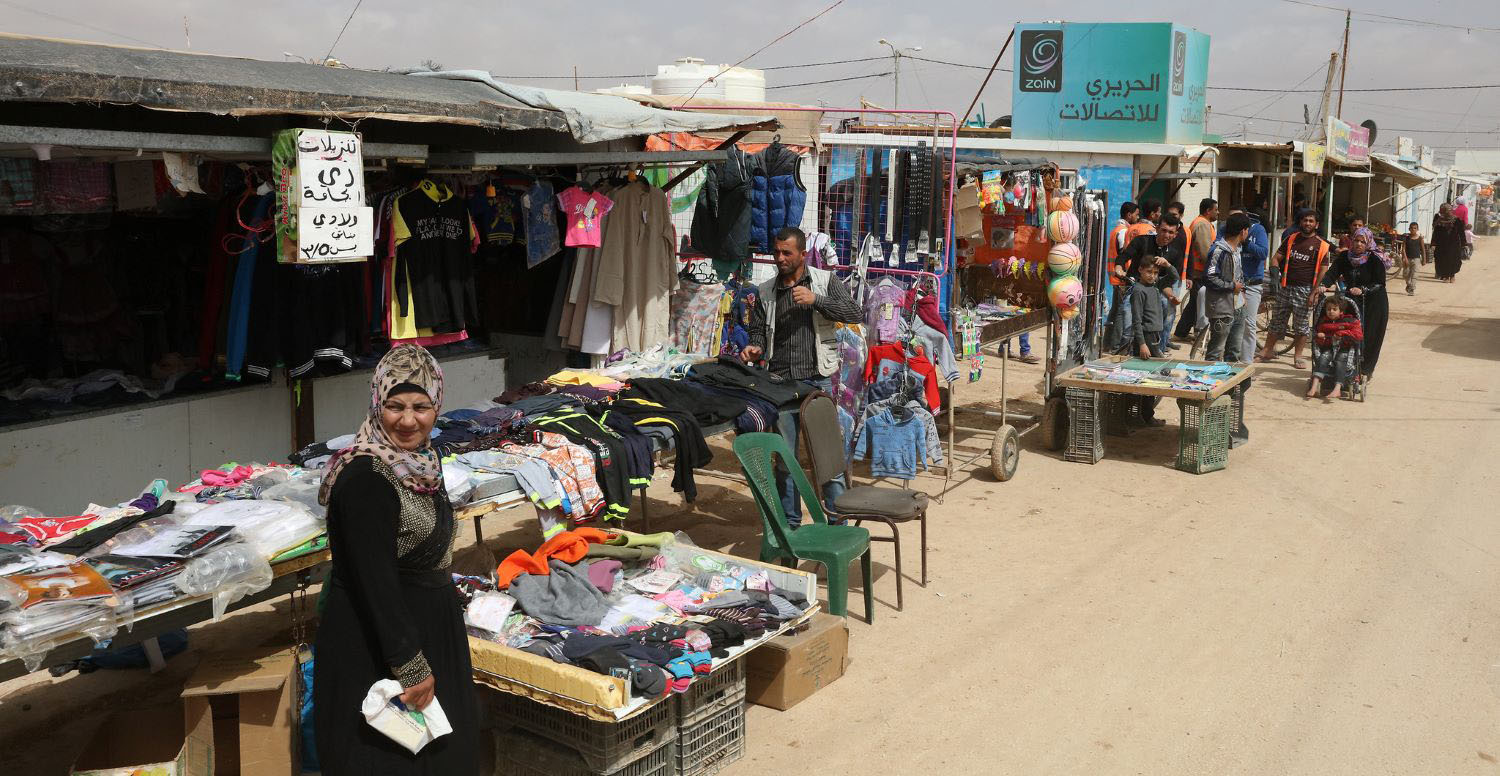Recommended
This is one in a series of blog posts exploring the issues refugees and forced migrants face in accessing jobs and economic inclusion within hosting countries. Each post is authored with local experts and provides a snapshot of the barriers refugees face and the policy priorities going forward. The full series is available here.
Welcoming refugees and asylum seekers into American communities is not only an opportunity to support people in need, but also brings new jobs, new opportunities, and economic growth to the United States. Refugees arrive ready to contribute; they bring energy and creativity to the businesses they start and work for, and quickly become valuable employees.
Yet refugees and asylum seekers with experience in specialized fields such as healthcare, education, and law often find arbitrary barriers and insurmountable red tape prevent them from practicing their professions. This blog post, co-authored by Meredith Owen and Mary Elizabeth Margolis of Church World Service (which helps newly arrived refugees settle in communities across the US), explores these barriers and how they could be overcome.
The US economy benefits from refugees
The United States has historically led the world in refugee resettlement. Since 1980, the country has admitted more than 3.1 million refugees fleeing violence and persecution. President Jimmy Carter referred to the benefits that refugees and immigrants brought to US society and the economy, and President Ronald Reagan praised the US’s welcoming tradition and refugees’ vital contributions to strengthening American communities.
The Trump administration jeopardized that tradition. President Donald Trump treated refugees as a threat and a burden, and cut refugee resettlement by 80 percent. Fewer than 12,000 refugees were resettled in the US in FY 2020. This sharp reduction meant the US missed out on potential economic contributors, costing the US economy over $9.1 billion per year.
Figure 1. Refugee admissions and resettlement ceilings, FY 1980-2020
Source: Migration Policy Institute (MPI) Data Hub
For those refugees in the US, early employment is a key first step toward social and economic integration, leading to self-sufficiency in the short term and self-reliance in the long term. With stable employment and initial investments, refugees can contribute to the US economy and their new communities. In 2015, refugees contributed $21 billion in taxes. Twenty years after arriving, refugees contribute (on average) $21,000 more in taxes than the original investment required to resettle them.
Refugees also contribute to the economy in other ways. Refugee-owned businesses provided more than $4 billion to the economy in 2015. Refugees are 40 percent more likely to be entrepreneurs than the general public and have a higher employment rate. They also tend to work in industries that have large shortages, such healthcare, transportation, manufacturing, farming, education, and food services.
Bureaucratic barriers often reduce economic contributions
Yet many refugees are unable to fully contribute due to systemic barriers. Their qualifications and experiences may not be recognized, and they may face outdated occupational and professional recredentialing processes as well as insufficient access to meaningful workforce development and adult education services. About 1.2 million migrants and refugees in the US have skills that go unused, in part because they cannot overcome these barriers.
For example, in recent years, there have been increasing system-wide delays in processing and issuing employment authorization documents (EAD). These delays were exacerbated by Trump-era rules that lengthened the time asylum seekers had to wait before obtaining work authorization and banned some asylum seekers from work altogether. They were founded on the allegation that the “ease with which aliens could obtain employment authorization” was fueling irregular immigration. Coupled with a lack of capacity and resources provided to US Citizenship and Immigration Services (USCIS), these delays left some refugees and asylum seekers unable to work as quickly, delaying self-sufficiency.
What can be done?
Two months ago, the US District Court for the District of Columbia ruled that the Trump-era rules on EADs were illegal. As a result, USCIS is required to process out-of-scope EADs and to dedicate more resources to address the large backlog of applications. USCIS estimates there are nearly 100,000 refugees awaiting an interview and that the asylum claim backlog is over 430,000. More than 85,000 Afghan evacuees—who entered the US with humanitarian parole—have also applied for EADs. It is therefore imperative that USCIS continue to receive sufficient resources to expand staff and processing capacity to issue EADs in a timely manner. Thankfully, USCIS recently announced that asylum seekers will not lose their work rights while waiting for their EAD.
Other changes are needed at the state level. Often, licensing and certification processes differ substantially between states, limiting portability and reciprocity. The Department of Labor is funding 11 states to focus on particularly affected populations, aiming to increase labor market access and eliminate unnecessary barriers.
In addition, a raft of bills has been proposed to reform the licensing process, target support to post-resettlement integration, and increase funding to bolster the resettlement infrastructure. For example, Virginia’s new law creates a temporary provisional licensure for internationally credentialed educators to increase the teacher workforce, and a bill in Pennsylvania would help eliminate the delays international medical students face in trying to obtain their medical license.
These are promising steps, but more action is needed at the federal and state levels:
- The White House should create a permanent "Task Force on New Americans” to facilitate integration for refugees and immigrants.
- States should expand licensing reform efforts in areas where refugees and immigrants have in-demand skills.
- National, state, and local policymakers should offer robust funding to serve refugee and immigrant populations.
- Congress should pass legislation like the New Deal for New Americans Act, the Refugee Protection Act, and the Bridging the Gap for New Americans Act.
- The Biden-Harris Administration should equitably and efficiently rebuild the Refugee Admissions Program and strengthen family reunification efforts; when families are together, it supports adults’ ability to work.
- All actors should also ensure that asylees get access to the same rights and benefits as recognized refugees, including labor market integration services.
Despite these important steps to reduce barriers to employment, there is much more that could be done, particularly at the state level. It is equally imperative that the Biden-Harris administration and Congress play their vital roles in welcoming new Americans and providing the resources they need to integrate and thrive.
Disclaimer
CGD blog posts reflect the views of the authors, drawing on prior research and experience in their areas of expertise. CGD is a nonpartisan, independent organization and does not take institutional positions.






